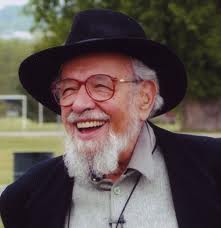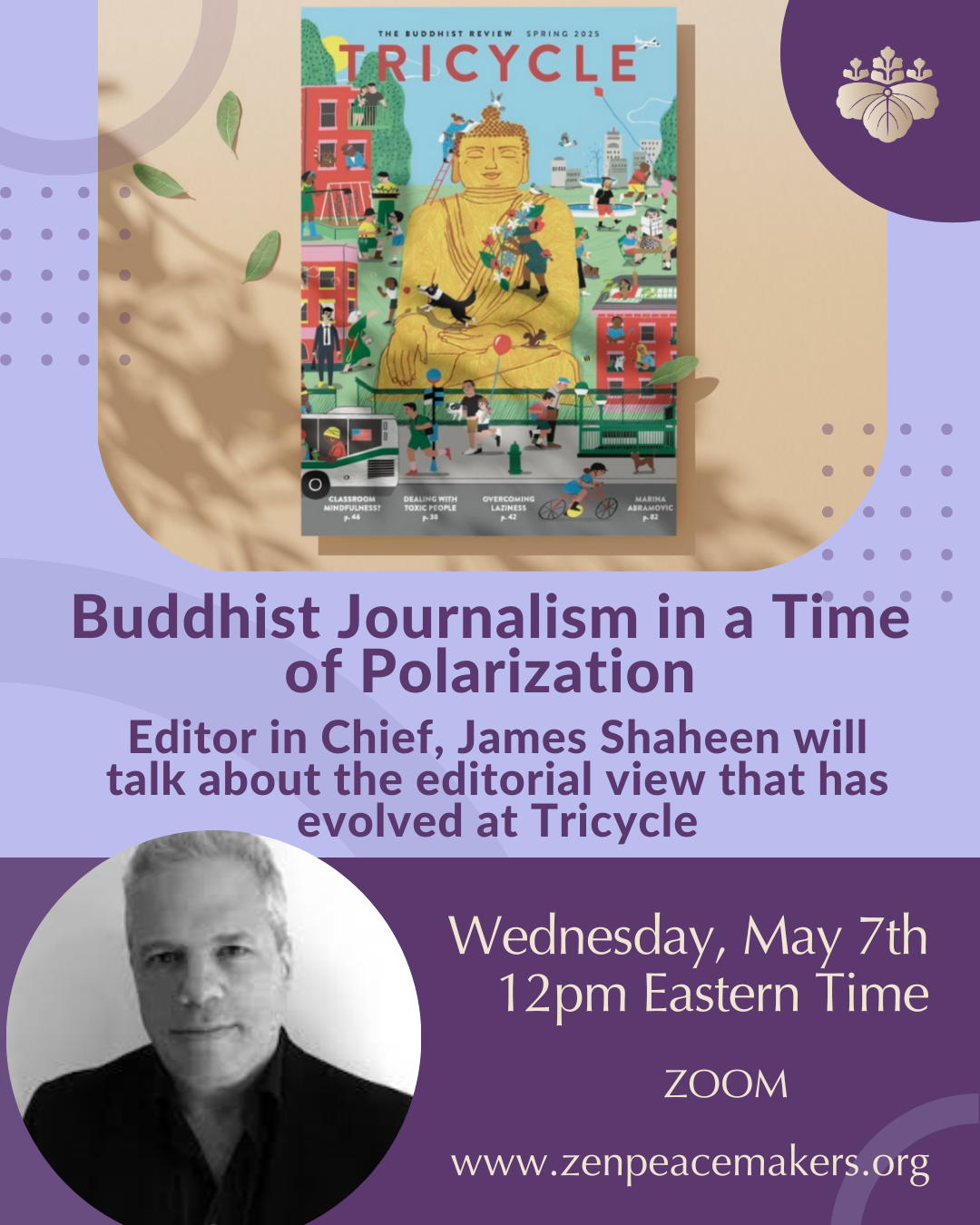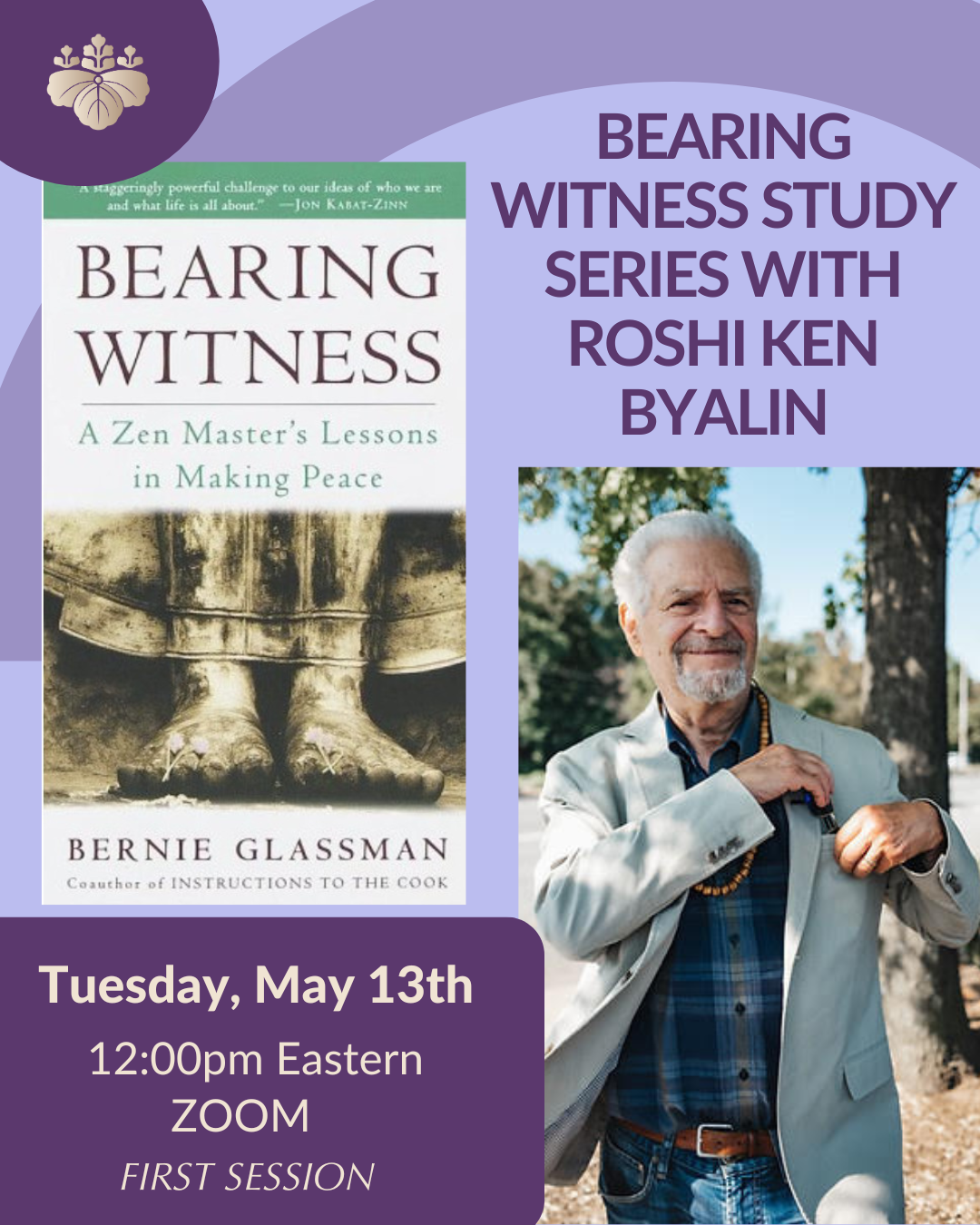Torah and Dharma
Part II:
The Technology of Transformation in Zen and Hasidism
Rabbi Zalman Schachter-Shalomi and Roshi Bernie Glassman
in Dialogue.
Edited by Netanel Miles-Yepez
ZALMAN SCHACHTER-SHALOMI, better known as Reb Zalman, was born in Zholkiew, Poland, in 1924. His family fled the Nazi oppression in 1938 and finally landed in New York City in 1941. He was ordained by the Lubavitcher Hasidim in 1947. For fifty years, he has been considered one of the world’s foremost teachers of Hasidism and Kabbalah (Jewish mysticism), holding posts as professor of Jewish Mysticism and Psychology of Religion at Temple University, and most recently as the World Wisdom Chair holder at Naropa University. He is the father of the Jewish Renewal movement, the founder of the Spiritual Eldering Institute, and an active participant in ecumenical dialogues, including the widely influential dialogue with the Dalai Lama documented in the book The Jew in the Lotus. He is the author of Paradigm Shift, Spiritual Intimacy, From Age-ing to Sage-ing, and Wrapped in a Holy Flame. Reb Zalman currently lives in Boulder, Colorado.
BERNIE GLASSMAN is a Roshi of the Soto Zen Buddhist lineage, a student of Maezumi Roshi, and is widely known for his influential books Bearing Witness and Instructions to the Cook. He is the founder (with Roshi Jishu Holmes) of the Zen Peacemaker Order (1996), which bases itself on three principles: plunging into the unknown, bearing witness to the pain and joy of the world, and a commitment to heal oneself and the world. He is a close associate of Reb Zalman.
What follows is an edited excerpt from a dialogue that took place at Elat Chayyim, the Jewish renewal retreat center in Accord, New York in the Summer of 1997 called “Torah and Dharma.”
Part one of this dialogue dealt with the ecumenical relationship between Judaism and Buddhism, the modern phenomenon of “hyphenated spirituality” and “Jew-Boos.” Part two looks at Hasidic Jewish and Zen Buddhist tools of transformation.
REB ZALMAN
One day, Reb Shneur Zalman of Liadi, the founder of the Habad movement,1 makes his way home from out of town. As his carriage comes in, all the hasidim are standing and waiting to receive the Rebbe and welcome him. But, one hasid, Reb Shmuel Munkes, is waiting in his own particular way. What is he doing? He has wrapped his gartel, his sash under his arms and around his chest, and he is hanging from the second floor window, where the Rebbe’s office is. He had tied himself to the window and he is hanging out there. The Rebbe approaches the building and looks up at him, and Reb Shmuel (who was funny guy) says to the Rebbe, “If you were a cobbler, there’d be a pair of shoes hanging around. If you were watch-maker, there’d be a watch. But, you’re a Rebbe, and what should be hanging around? A hasid!”
The notion is that a rebbe has to be a hasid-maker and a hasid-fixer; taking a person and turning her or him into someone who uses the tools right for their own aspirations — that is a great thing, and Reb Shmuel wanted the Rebbe to advertise that just as the cobbler used to advertise with a pair of shoes! It seems to me that this is something of what a roshi must be to her or his students, using the koan2 as a tool.
ROSHI BERNIE
Teachers work with different kinds of students in different ways. There are a number of stages of koan, so the question asked is different for different stages. But let me give a few aims.
One aim of koan-study is to see the oneness of life. That is to see the state in which your ego-structure, or you are out of the picture. In that type of work, we ask the student to just try to “become.” The type of koan given is generally something that you cannot think too much about. There is a whole category of these koans, and some are better than others because they have less to think about.
A koan like that is, “Seeing your face before you were born.” From my understanding, in terms of the Four Worlds of kabbalah,3 or the s’firot,4 it is getting up to the keter5 stage, before anything is created; “What is your face there?” It is that kind of question. “The sound of one hand.” What is the sound prior to the phenomenal world? That is to say, before there is any kind of other to inter-act with.
One of the most famous koans is a question that a monk asked a very famous teacher, Joshu:
“Does a dog have Buddha Nature or not?” For us, Buddha Nature is the absolute, that state prior to phenomena. The monk knows, because Buddhism says, “Everything is Buddha Nature,” it is not that you have it or you don’t have it. That is not the question. But he asks, and there is no easy way of answering. So, Joshu says, “Mu,” which is simply a negation.
But, that is not the point. As a koan, it is easy to work with because we ask what is Mu? The point is just to become “that.” In Judaism, it would be similar to saying, “What is aleph?6” So, the meditation there is to become that state.
In the beginning, one is naturally thinking and concentrating on it. It is still subject/object. Therefore, the roshi creates an environment in which you get tired in all kinds of helpful ways. Over and over you are concentrating on it until that subject begins to fall away. But you keep asking that question. It is something of a pressure cooker. You keep coming in and saying, “It is this! It is that. No, throw it out.” Finally you give in, and yet, the roshi sees that you’re still trying to force something and you are not really there. So the process continues. Eventually, you are beside yourself, almost in a breakdown. You are not there any more. But, that is still not good enough! Now, in that state, you have to keep going until something happens and there is “insight.” You leap out of that plane of recognition and see that state without being subject/object. When it happens, that is what we call a “first seeing of the state.” Of that this is just one body. Usually, it is very small insight.
Now comes the major part of koan study, where we probe through the koans. The first question would be like the monk sitting and asking himself, “Master are you there?” We then ask, “What is the spirit of that?” First, you have to sit with it and feel the whole gestalt. “What is the spirit,” and then, “what is the key point? What is the secondary point, the third, . . .” So, it is a probing. But it is trying to get you to pin down what is going on there. In the case of the koan of “What is your face before your parents were born, what is your original face?” that is really a little story:
There was a famous Zen teacher called the Sixth Patriarch of China, which meant that he was the sixth in line from the Buddhist master, Bodhidharma. Bodhidharma was the twenty-eighth in line from Buddha Shakyamuni. The first twenty-eight were Indian patriarchs, and then Bodhidharma takes Buddhism to China and now we have a new line of patriarchs.
The Sixth Patriarch was an illiterate woodcutter. In some ways, he is somewhat analogous to the Ba’al Shem Tov, but not really in style. He is the founder of what we think of as the kind of Chan, or Zen that is practiced in Japan.
So, one day, he was out gathering wood to support his mother, and is coming back with his load of wood when he hears a monk reciting from the sutras. And the monk said, “Abiding nowhere, raise the mind.” With that, everything falls away and the woodcutter is enlightened and he says to the monk, “Where did you hear that?” This is where Buddhist training is needed. He had never sat before and didn’t know anything about Buddhism. And, that rigorous training could only be gotten up North.
China was like the United States, at one point. Northern China was the elite, and Southern China was looked down on by the northern Chinese. They were considered barbarians in a way. Of course, if you weren’t Chinese, then you were really barbarians. But if you were southern Chinese, you just weren’t very good.
So, he traveled from the south up to the north to study, and he comes to a monastery with 1500 monks, all very accomplished. He comes to the Fifth Patriarch, the head of the monastery, who asks him, “Where are you coming from?” He tells him that he comes from the South. And the Fifth says, “In the South, there is no Buddha Nature; they are barbarians.” And the Sixth says, “In the Way, there is no North and no South.”
So, it was a testing statement, and the Fifth Patriarch sees that this is his successor. Of course, if the patriarch were to do something too drastic, he would probably cause the killing of the soon to be Sixth Patriarch by all the “enlightened monks” there. So he says to the Sixth, “You go to work in the mill grinding the rice, getting rid of the hulls, making white rice out of brown rice.” And, he does that for a year, and a year later, the Fifth goes to the mill at midnight and says to him, “Is the rice ready?” And he answers, “The rice is ready.” “Has it all been separated?” “Yes, it has all been separated.” So, he makes him the Sixth Patriarch and says, “Now, run, because they’ll kill you.”
He takes him in a boat and rows down the river with him and lets him off and says, “Go hide for ten years.” The next day, he gathers the assembly of monks and tells them that he has retired. He doesn’t do any more teaching. They look around for who is taking over. There is no one there to take over. So, they realize that the lay-person is missing, and that something must have happened with him and the Fifth. They go after him to bring back the symbols of the patriarch’s authority, a few symbols handed down in that midnight transmission; a stick, a bowl, and a robe. They go to get these and this is the prelude of the koan of the “original face.”
The koan starts off like this. This former general is one of the senior monks. He had been a general in the army, retired, and been in the monastery for ten or fifteen years and was a very senior student. All the monks had gone in different directions but the general happened to be the one to find him. He came to bring back the robe and the bowl to the monastery, and the Sixth Patriarch puts it on the floor, and says, “The Dharma is not to be fought over. If you want it, take it.” The general reaches down to pick it up and can’t lift it. And, drenched with sweat he says, “I’ve come for the Dharma, not for the robe. Please give it to me!” And then the Sixth Patriarch says, “Forgetting all good and bad, all me and you, all this and that, before your parents were born, who were you?”
That is where this koan comes from. And the general realizes and says, “How can I thank you?” And the Sixth Patriarch says, “Don’t thank me. Your teacher is the Fifth Patriarch. It is as if you have been practicing shooting your arrow at the target with some teacher, and now you happen to hit something. It is not me.”
In that story there are many points. How do you get to the place of being ready to receive the Dharma? What is the role of the robe and the bowl? What is that state before your parents were born?
The first one, realizing the state of subject/object is like an entry exam. Then, start probing. The next series of koans deal with the use of expression. This is to help the students sharpen up their ways of teaching or talking about what isn’t so easy to talk about. Ways of expression doesn’t have to be talking, it could be shuckeling,7 or it could be the singing; it is building up the expressions.
The final koans are almost like review. They are even less of what one thinks of as koans, they are more of the interplay between relative and absolute, and the role of the precepts. Koan-study is one form of study in Zen. Not all of the Zen sects use it that much; it depends on the teacher. Koan-study is one technique.
REB ZALMAN
Reading D. T. Suzuki and others, I knew that a koan was “grist for the mill,” like a monkey wrench in the machinery, saying, “You can’t work it out with your head.” But, I also felt that you couldn’t get to how it “breaks the head” until you have worked with the head. And, when I was reading about it, it seemed as if it wasn’t supposed to be done this way. So, I didn’t understand that there was a discursive element of trying to “work it through.”
This is similar to how we do hitbonenut, contemplation. Indeed, as you were talking about that map of koan teaching, I was finding the parallels to Habad Hasidism8 were fantastic!
One of the things you do in Habad meditation, hitbonenut, is to go over a teaching that you have gotten from the rebbe. Today, most students don’t spend time going over a teaching, fixing it in the mind the way it was done in the past. This was also called, chazzarah — “going over,” “repeating,” or “reviewing.” Among the Habad hasidim, there was always someone (usually several people) who would memorize what the rebbe had said, who remembered eight hours of the rebbe’s talk, and would even say, “Here is where he coughed.” We, with our literary development, haven’t trained our mind to hold such huge quantities of information. But, when you are a disciple trying to grow, you listen with intensity and a deep desire to receive.
But, once you have taken it in, then what? In the yeshivah,9 we would go and sit at a table and “review” the rebbe’s talk together, filling in points for one another until we had reconstructed the talk, and then we took it apart until we understood it. But, that was just one method. The other was for the individual’s meditation on a theme during prayer.
The hasid would usually start by shuckelen, swaying gently back and forth. You will find if you sit in a way that you can shuckel and be freer, that the body will be in a more active state than if it were just slumped over. This is important. In Hebrew, it’s called hitor’rut — “awakedness.” Likewise, in the middle of a meditation, something is going to come that yearns to be expressed, you want to lift it out of the heart and offer it up, saying, “Oh God, I want this to come to You, to reach You, I want to reach for You” and you make the gesture. So, these body aspects of the meditation are important in hitbonenut, they help to awaken one, to awaken the heart.
One of the rebbes, Reb Avraham Yehoshua Heschel of Apt, puts it so beautifully. Before he teaches, he says, b’hair lev v’sum sekhel, “When the heart is awake, you put your mind to it.” Then, you pay attention to the teaching. This is not attempt at stilling the mind, or getting the mind clear. This is trying to fill the mind with a very specific content at this point, charged with the high value of the teaching.
So, when the shuckelen has got going and begun to open things up, you start to go over the teaching in your head again. You take the time to rehearse this inwardly, just reflecting on it. Then you feel it in your own body, laughing on the inside about how ridiculous it is when the Fifth says, “In the South, there is no Buddha Nature; they are barbarians.” And the Sixth says, “In the Way, there is no North and no South.” Go into this feeling and insight, remember it, and relive all the “ah-has” that you got when you heard that teaching from Glassman Roshi. You allow them to arise in you again. If you can, you go into one of these, and just pull out the file that is behind it, saying, “Let me take a look and see what is there.”
In discursive meditation, working with these processes, the question is, do you follow a thought or do you swim in the soup of those ideas? Does one focus on one particular point, or on the whole thing? The answer is, it depends on where the “point” is located. If it is located in the heart, then all the rumination that would come from the head would not satisfy. It would address the “words” but not the “sense.” If you are in a heart mode, then the ideas are just the way in which you float, because then it feels really good to say, “I want to bask in the light contained in these wonderful values and ideas.” Each time you receive one, you pick it up and caress it, like you kiss a sefer Torah,10 then you let it go and you appreciate it as it floats away.
Sometimes the center is more in the head and you try to make sense of your reality map. You check things out from that place in the meditation, What do I have to shift and go from the mechanical model where a human being is seen as put together; an arm, another arm, a leg, etc., like putting a doll together. Those are members, but they haven’t yet been re-membered. The members are cut off. When we connect with it, then you start going into the idea, you stay with the idea, and you come back and say, “Ah-ha.” To shift from the mechanical model to the organismic model requires me to re-tool my mind in this way. And, this is a very sharply focused meditation, because you have to reset the system files in your computer. That requires a really careful and focused awareness, and then you can’t “swim.” So, you first always ask the question, “What kind of meditation do I need to do?” If it is a feeling meditation, then go to that place, and begin with a little mood music, a niggun,11 and let all these ideas swim.
When you come to the conclusion of the meditation, ask yourself, “What action directive occurred to me when I was going over this idea?” There must have been some action directive. In order not to leave this as merely an idea, think about what you are going to do about this situation the next time, and start entraining it now as a result of understanding the “teaching of the original face.” “As a result of this meditation, I intend to do this.” Do it on the inside so that your body has done what we sing about with the words, hin’ni muchan um’zuman, “I prepare my body.” How do I prepare my body? I see myself doing that action directive.
ROSHI BERNIE
I’m drinking this in. What I am feeling is a new way of working with those teachings. It is a way of bringing our meditation methods to an understanding.
This year, I have been trying to figure out how I am going to do the teaching part of my work. I am working in so many different fields now and with so many different kinds of people. For some of these people, the methods I was trained in are not always appropriate; politicians, business leaders . . . Now, I am thinking of working with this situation differently. Usually, when I give a talk, there are many different points I am trying to get across. But, now if someone says, “Oh, that’s a good point,” we might stop there and stay with that a while; what a beautiful way to learn how to sit! If you hear a point, don’t get overloaded. Sit with it, play with it, examine it, sing with it, dance with it!
This dialogue ended with a chant of the sh’ma Israel to the beat of the wooden clapper and the bell.
NOTES
- The Hasidic movement in Judaism, begun by Israel ben Eliezer, the Ba’al Shem Tov (1698-1760), was a mystical pietist movement focusing on joy in service and the direct experience of spiritual realities. The Habad school of Hasidism was founded by Rabbi Shneur Zalman of Liadi (1745-1813). This is the branch of Hasidism to which Reb Zalman belonged in his youth.
- A koan in Zen refers to a (usually) short statement (often paradoxical) given to a student to meditate upon.
- Kabbalah, meaning, “that which is received” is the general term for Jewish mysticism.
- S’firot in the kabbalah are divine attributes which are the archetypes of all modes of existence.
- Keter, meaning “crown,” is the “highest” of the s’firot (see note 4) and is prior to manifestation, above knowing, but on the way to becoming.
- The first letter of the Hebrew alphabet. In Jewish mysticism it often represents the primal unity before duality, symbolized by the letter bet.
- Shuckelen is a Yiddish term for the swaying movement used in Jewish prayer.
- See note 1.
- School of rabbinic training.
- A Torah scroll or book.
- A melody (often wordless) from the hasidic tradition.




